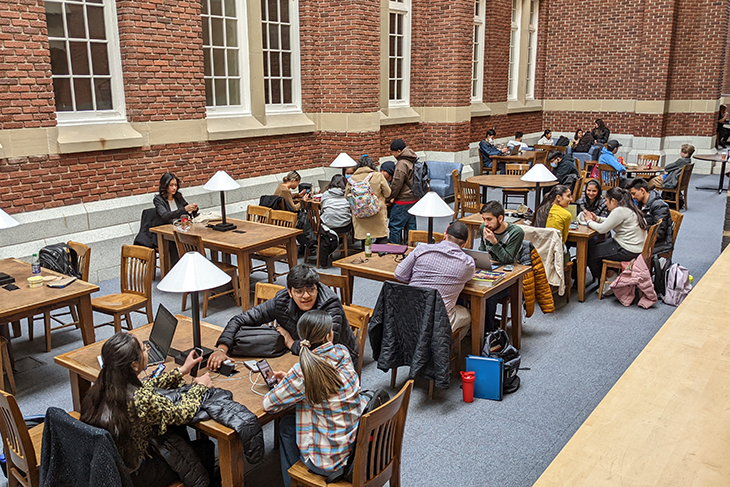Complete guide to studying

There's one thing you can always improve when you're a student — your study habits. From the atmosphere to setting your session intentions, we've got a guide to get you started or maybe shake up your routine. Plus, save it to come back later when you need a little more inspiration, we'll be adding the best tips from students #HereAtSAIT throughout the semester.
👉 Looking for personalized support? Sharpen your study skills and ease exam anxiety with support from an academic coach — for time management, note-taking, exam strategies and more — these pros are ready to work on a plan with you.
1. Plan your study sessions
Make studying a priority! Look at your calendar and schedule specific study sessions for each subject.
Consider, when do you need to be in your study area to work on school assignments? When are your classes? What time of day do you work best?
Creating a schedule and following a routine can help you feel more productive, more in control and more accountable. Plus, it helps set boundaries around your time and reduce distractions. This is especially important when learning remotely.
2. Set goals
Make a list of study goals and check them off as you complete them. This is not only a great way to organize yourself but can help increase motivation as you complete tasks. Consider making a daily to-do list with your top three to five tasks.
3. Organize your study space
Your physical environment can make or break your study sessions, so be intentional about it. Choose a spot free that’s free of distractions and comfortable (but not too comfy!). Make sure you have the proper technology and equipment. Try to separate your study area from the space you use for relaxation.
Create an environment that helps you focus:
- Look for natural light
- Add some ambient noise instead of music
- You can also try music without lyrics check out a study playlist on Spotify or YouTube
- Designate a single study spot Maybe include a plant or even a pet
🏫 Try a different atmosphere: book a study space at the Reg Erhardt Library.
📷 Have you found the perfect study spot? We want to see it! Share a photo and tag #HereAtSAIT so we can feature it.
4. Eliminate distractions
Try to eliminate as many noisy distractions as possible. Turn off the TV, put your phone on silent, close the window and consider using earplugs or noise-canceling headphones.
5. Preview and review daily
You wouldn’t jump into a soccer match without warming up, right? Treat your brain the same way. Each day before class, spend 30 minutes previewing new material. Skim your textbook and preview PowerPoint slides and videos. Then, after class, spend 30 minutes reviewing. Read over your notes, clean them up, complete assigned readings and clarify anything you’re unsure of.
Pro tip: Aim to review within 24 hours after class.
This cycle of preview and review is one of the best-proven methods for storing information in your long-term memory.
6. Take regular study breaks and change it up
Capitalize on how the brain processes information — study in short sessions and schedule breaks throughout. Divide each hour of study into three 20-minute blocks and dedicate the last few minutes of each block to getting a drink, having a snack or stretching.
Plus, mixing up your study subjects helps you be more attentive. Try using a timer to keep yourself on track.
📣 What's your favourite study drink or snack? Are you on team coffee or tea? Message us your answer on Instagram @HereAtSAIT or tag a photo with #HereAtSAIT.
7. Sleep well and get moving
It pays to prioritize sleep. Did you know that sleep is a factor in learning? Being sleep deprived not only limits your ability to learn new information but also makes it hard to recall information you already know. Stay well-rested and — even better — add in some regular exercise each day too. This will help you stay alert, maintain motivation and reduce stress.
8. Review your learning objectives
Check your course outline for a learning objective refresh — they’re basically a road map for your course. Learning objectives can give you a good idea of where to focus your time and provide direction on what to study. You can even turn them into questions, as a way to test yourself on course content.
9. Study actively — don’t just read through your notes
Make additional notes, create flashcards, take practice tests, and study with a group online. Active studying helps you remember content better.
📣 How do you like to study? Message @HereAtSAIT with your best method and we'll share it with the SAIT community.
Survive final exams
Feeling the pressure of final exams? Get tips and strategies to feel organized and prepared for the exam season. Learn how to set up a final exam study schedule and review the basics of active studying.